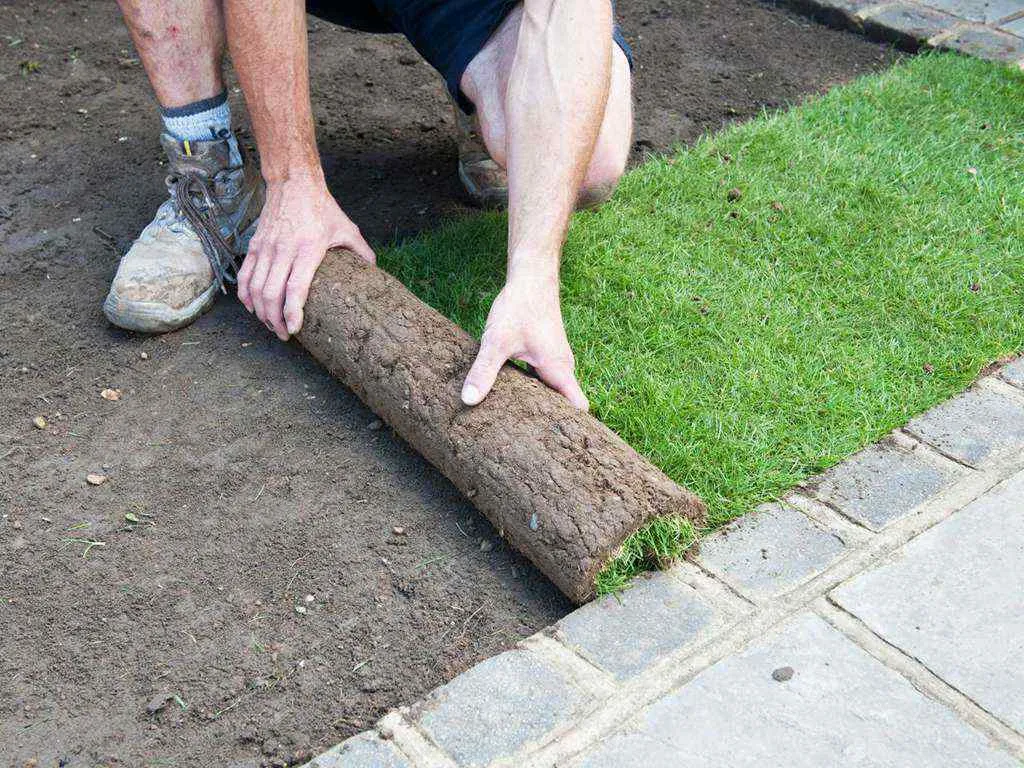
Thinking about a lush, green lawn? Sod installation is your shortcut to a vibrant outdoor space. But here’s the key: timing matters. Picking the right moment for this process ensures a thriving, healthy turf. In this guide, we’ll walk you through the seasons and help you pinpoint the optimal time for your sod project. Let’s dive in!
Spring: The Ideal Season
Springtime brings nature back to life, making it the prime season for sod installation. The reasons are crystal clear. The air warms up, the soil awakens, and growth is in full swing. These conditions create a welcoming environment for your new lawn.
As temperatures rise, the soil becomes receptive, allowing roots to establish themselves deeply and securely. This leads to a robust and enduring lawn. Spring strikes the perfect balance – not too hot, not too cold. It’s the Goldilocks zone for your grass.
Moreover, spring showers often lend a helping hand, providing natural irrigation without the need for constant watering. This is a bonus for both your wallet and the environment. So, when the calendar turns to spring, seize the opportunity. Your lawn will thank you with a carpet of lush, green beauty.
Get A Quote Today And Let’s Make Your Dream A Reality!
Summer: Considerations and Challenges
While summer offers long, sunny days perfect for outdoor activities, it presents both opportunities and challenges for sod installation.
Pros: On the positive side, summer allows for rapid root growth. The warm temperatures encourage quick establishment, leading to a lush lawn in a shorter span. Plus, you get to enjoy your beautiful new turf during the peak of the outdoor season.
Cons: Yet, the summer sun can be a double-edged sword. Higher temperatures demand vigilant watering to prevent the soil from drying out. This means a more rigorous watering schedule, which may increase maintenance efforts.
Furthermore, the intense heat can stress young sod. Adequate hydration and shade become crucial. Additionally, consider the potential for heatwaves, which can exacerbate these challenges.
Balancing the benefits and drawbacks of installing sod in summer requires extra attention. With proper care, you can still achieve a thriving lawn, but be prepared to invest a bit more time and effort.

Fall: Another Viable Option
As the leaves change and the air grows crisper, don’t dismiss the idea of sod installation just yet. Fall has its own set of merits for this green endeavor.
During autumn, cooler temperatures prevail, creating an ideal environment for sod to take root. The soil retains summer’s warmth, promoting steady growth even as the days shorten. This means less stress on the new grass, leading to a strong and healthy foundation.
Additionally, Mother Nature lends a helping hand. Fall typically brings more consistent rainfall, reducing the need for extensive manual watering. This natural irrigation aids in the establishment of the roots, fostering a resilient and enduring lawn.
Choosing fall for sod installation ensures that your lawn gets a head start before winter’s chill sets in. By the time spring arrives, you’ll be greeted with a vibrant, well-established turf, ready to thrive in the warmer months ahead.
Winter: Limitations and Precautions
While winter may have its charm, it’s not the most conducive season for sod installation. There are a few limitations to consider before taking this route.
Limitations:
Firstly, the colder temperatures slow down the growth process. The grass goes into a semi-dormant state, making establishment a gradual process. This means you’ll have to exercise patience before witnessing a fully lush lawn.
Additionally, the risk of frost and freezing can be detrimental to the delicate roots of new sod. It’s important to be vigilant and take precautions to shield the grass from extreme cold.
Overcoming Challenges:
If you choose to install sod in winter, a few precautions can make a significant difference. Ensure the ground is not frozen before installation, and avoid stepping on the grass as much as possible to prevent damage. A layer of mulch can act as insulation, protecting the roots from freezing temperatures.
Furthermore, consistent watering is crucial. While it may be tempting to cut back on watering in the colder months, the grass still requires moisture to survive.
By taking these precautions, you can successfully navigate the challenges of winter sod installation and lay the groundwork for a thriving lawn come spring.
Conclusion
In the journey towards a vibrant, verdant lawn, timing proves to be a pivotal factor. Each season presents its own set of advantages and challenges for sod installation.
Spring emerges as the prime season, offering optimal conditions for rapid growth and robust root establishment. Summer beckons with its longer days, but demands extra care due to higher temperatures.
Fall provides another window of opportunity, with cooler temperatures and reliable rainfall setting the stage for a thriving lawn. However, winter poses unique challenges, requiring extra precautions and patience.
Considering all factors, spring and fall stand out as the top contenders for successful sod installation. If possible, aim for these seasons to embark on your turf transformation journey.
Remember, regardless of the season you choose, attentive care and proper maintenance will ensure the lasting health and beauty of your lawn. Happy sodding!

